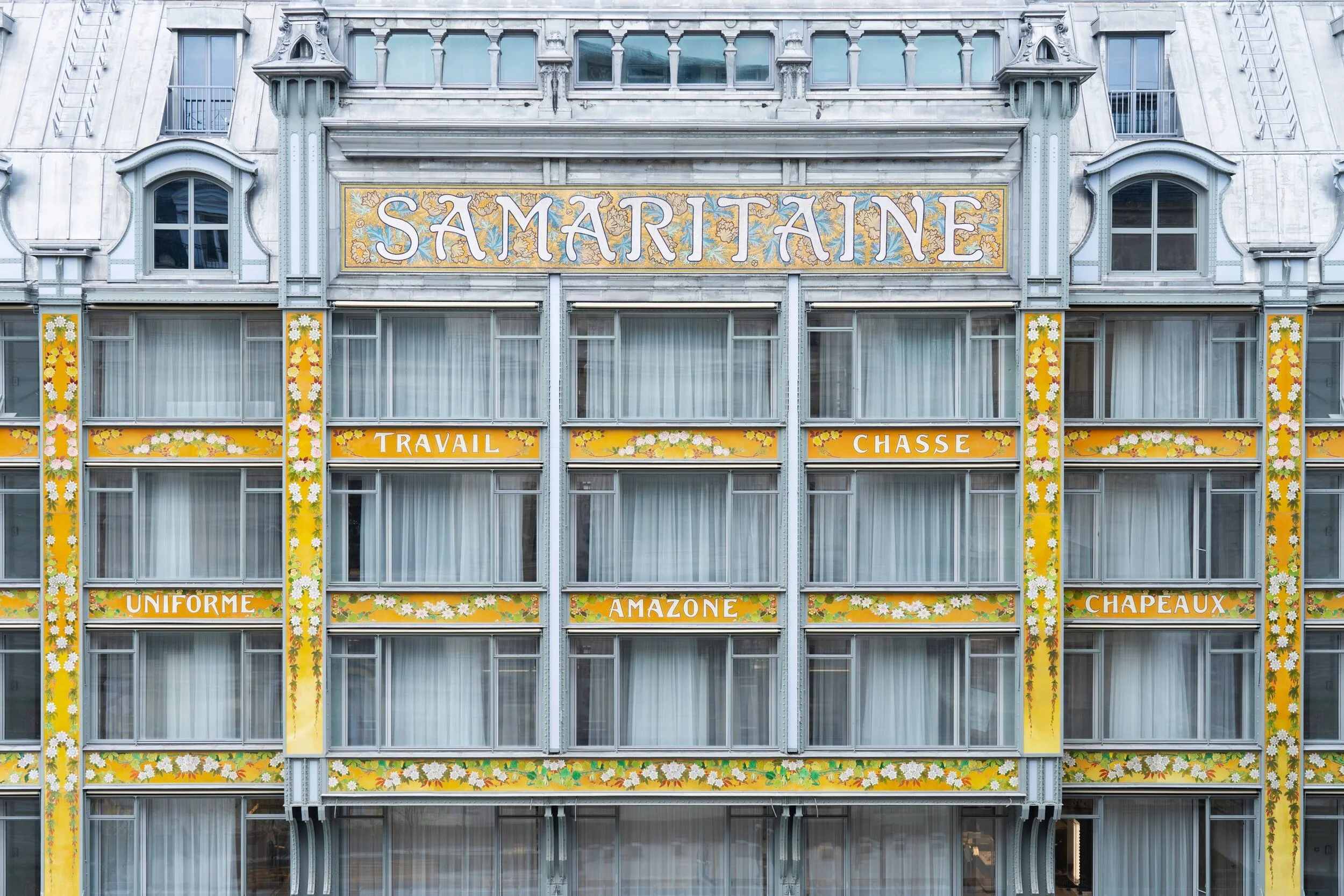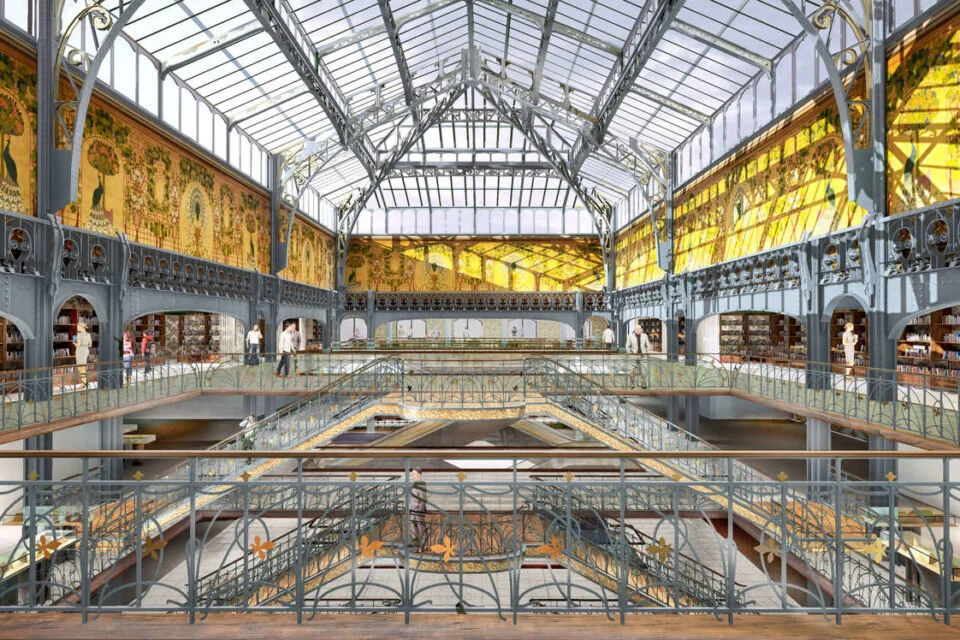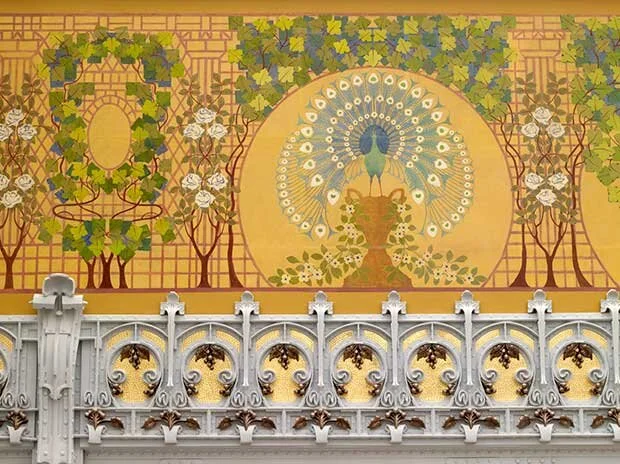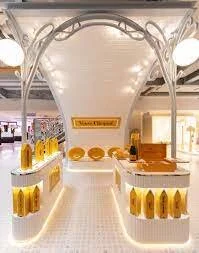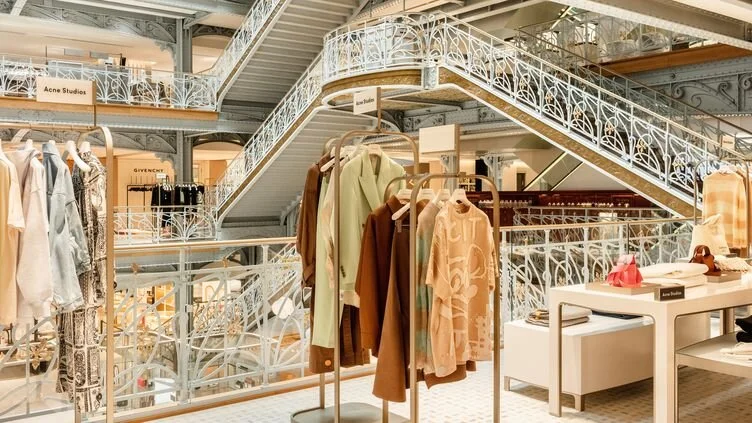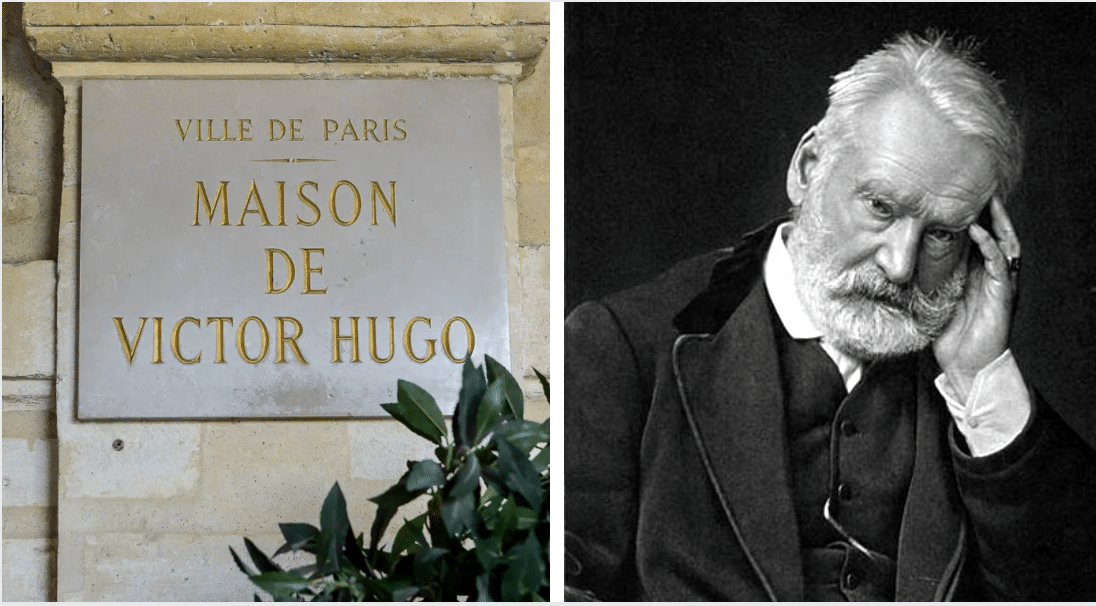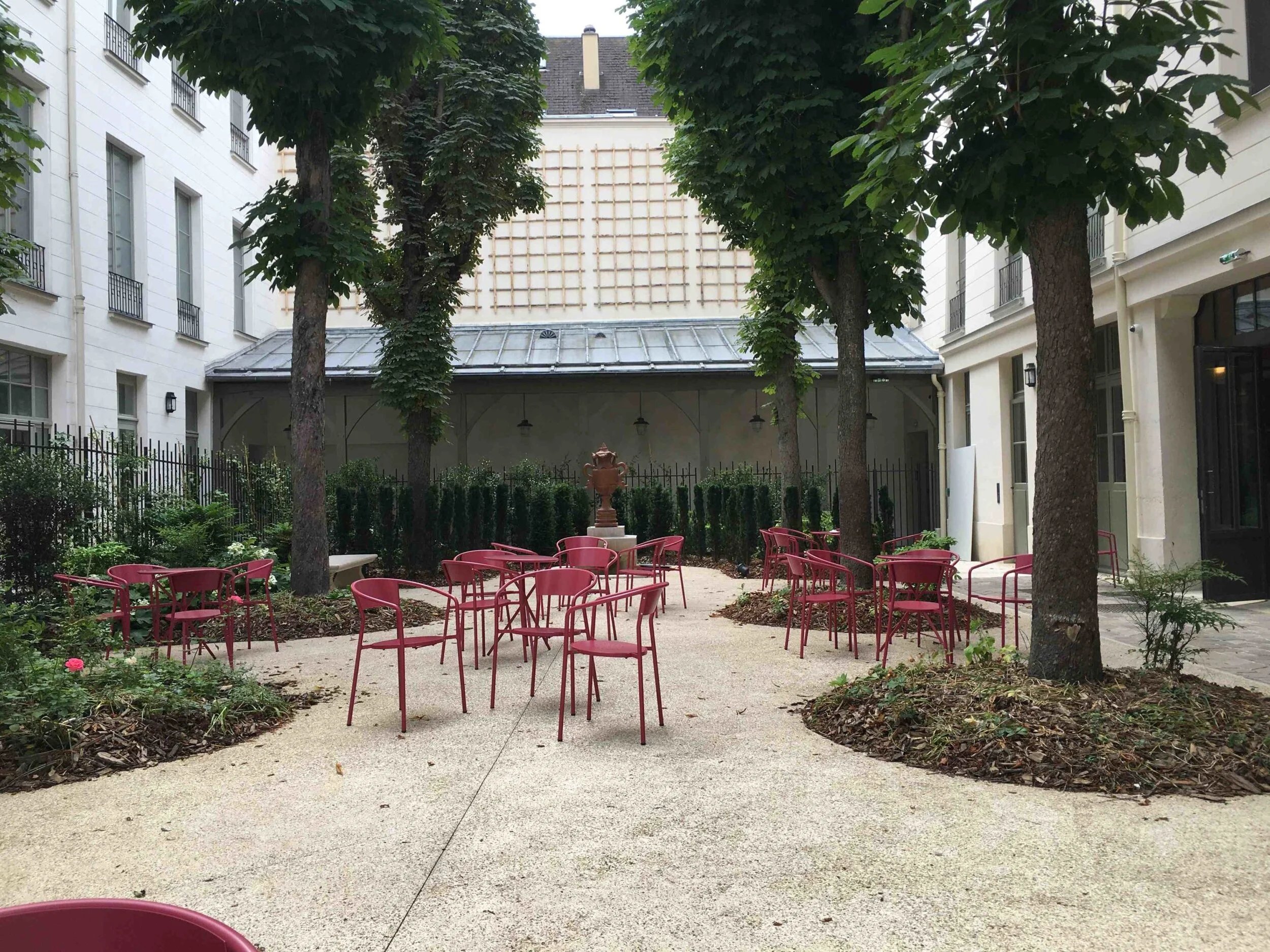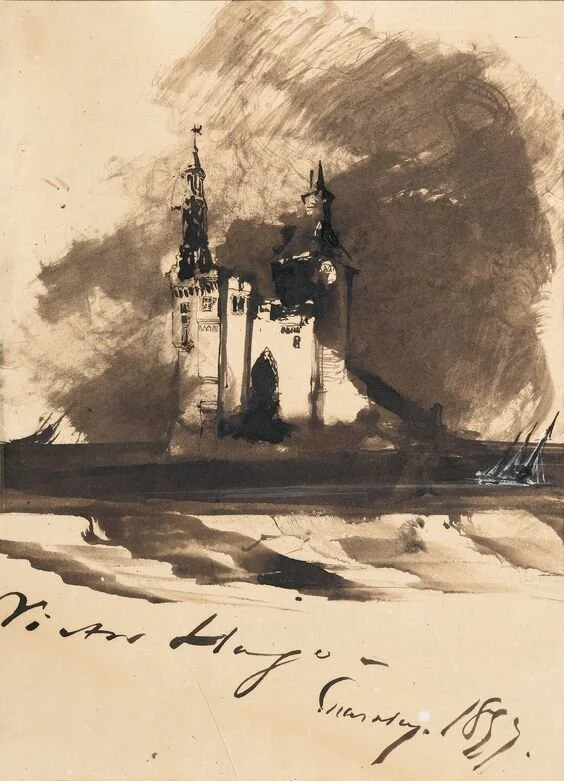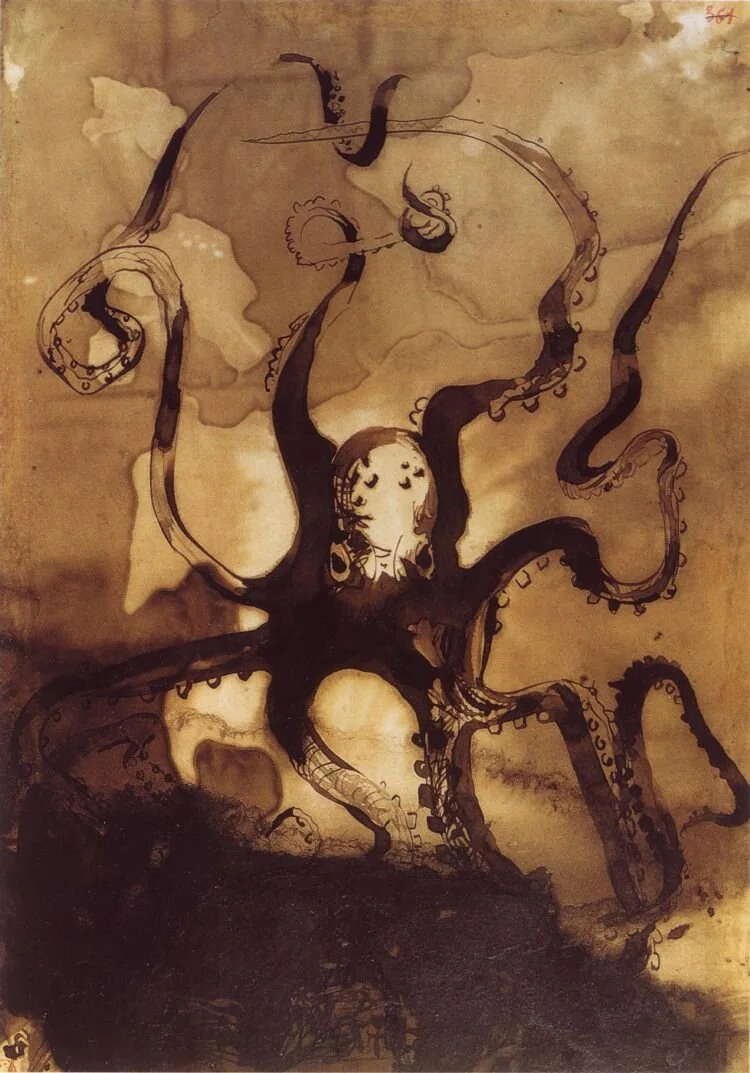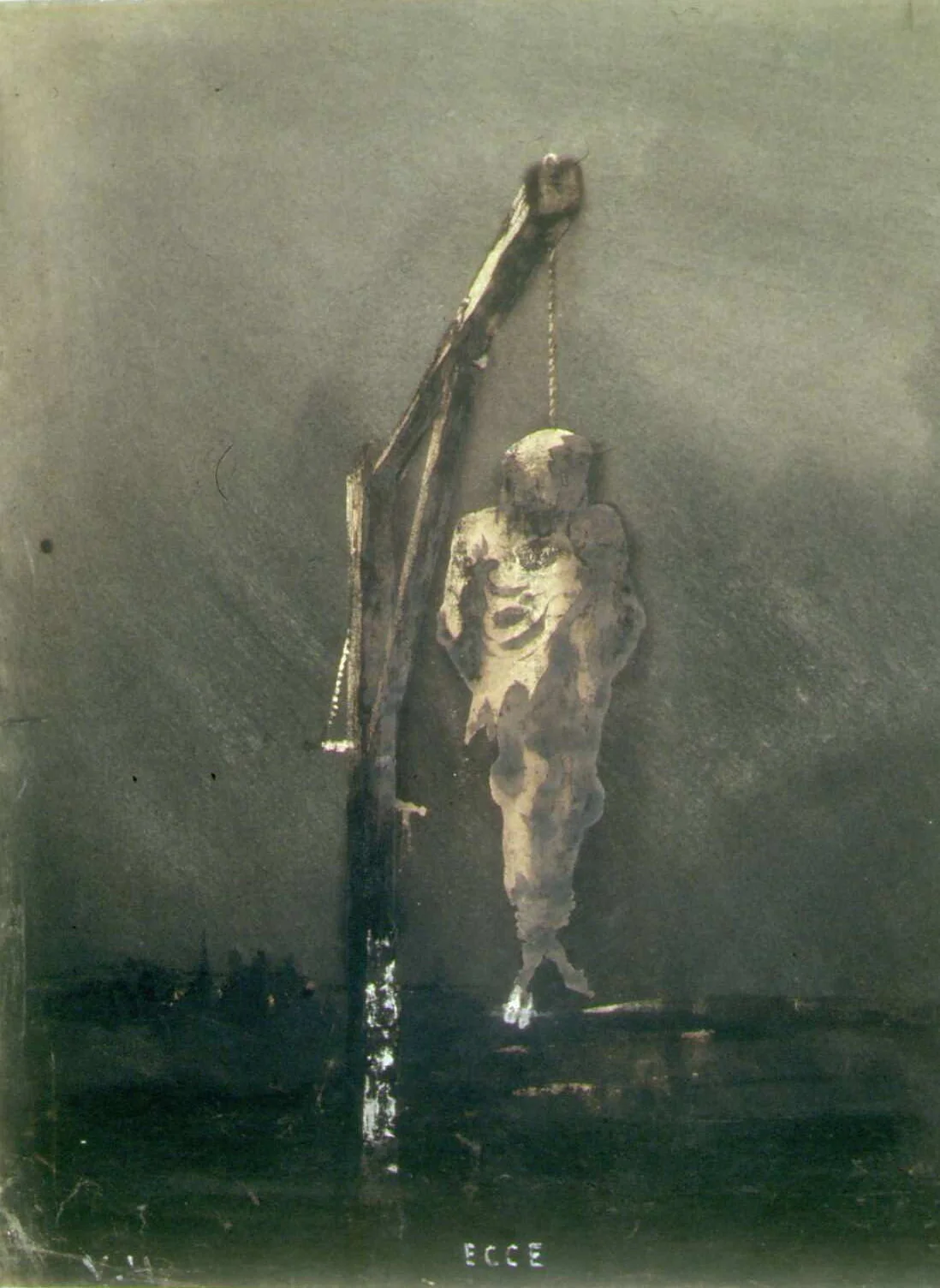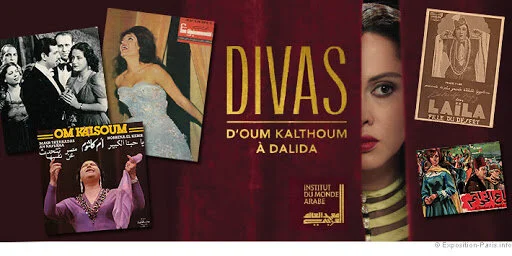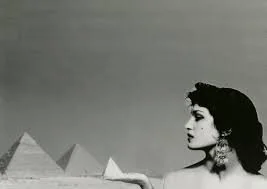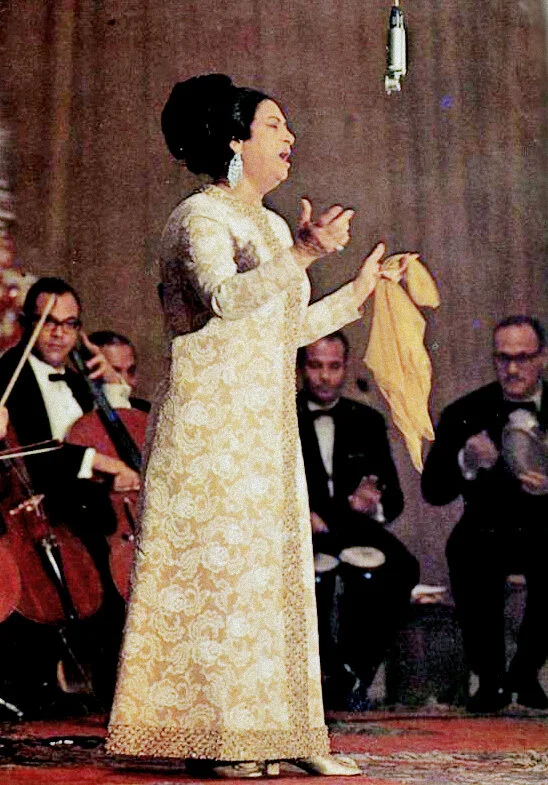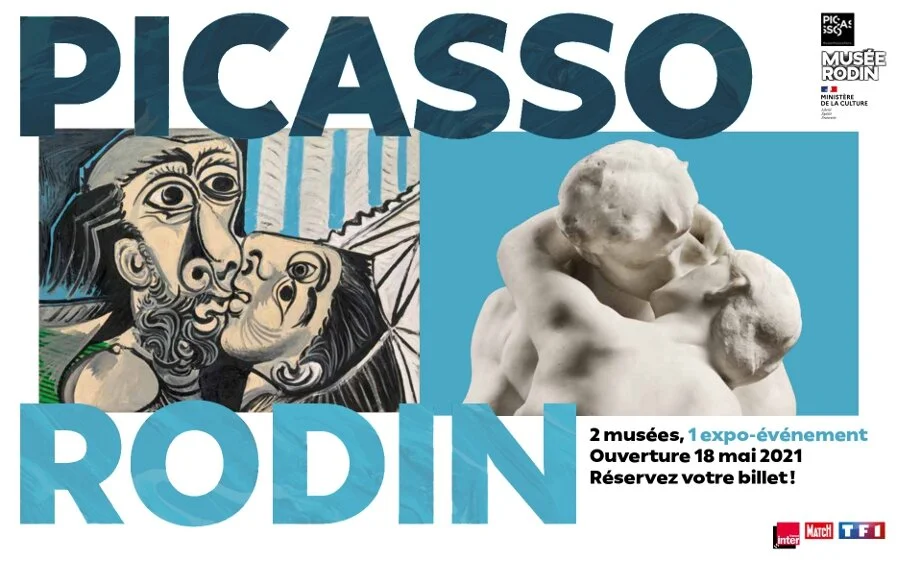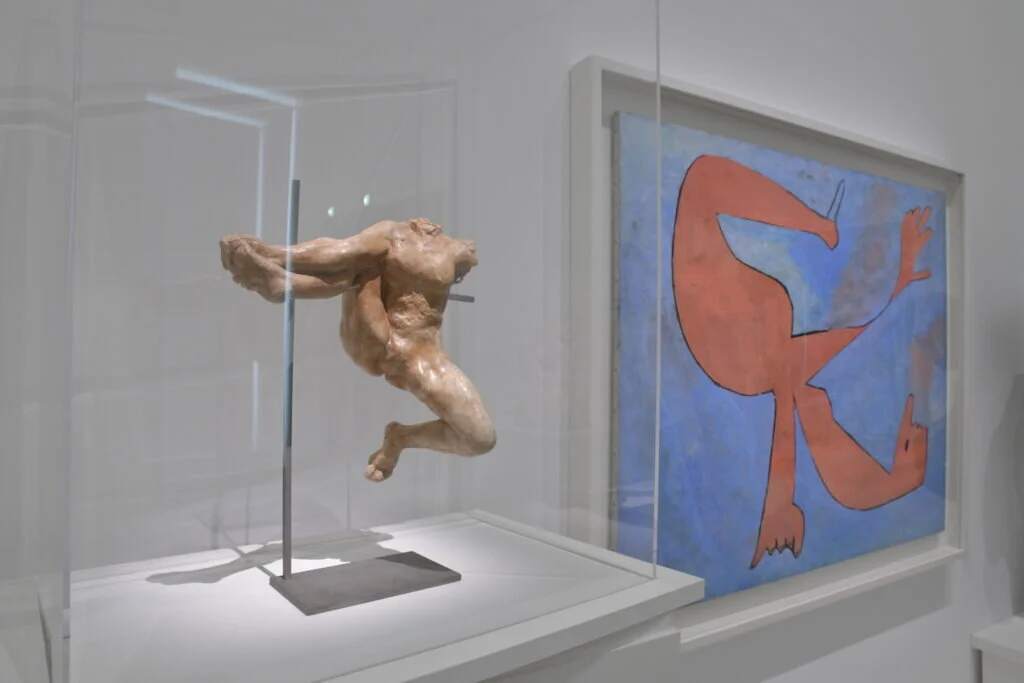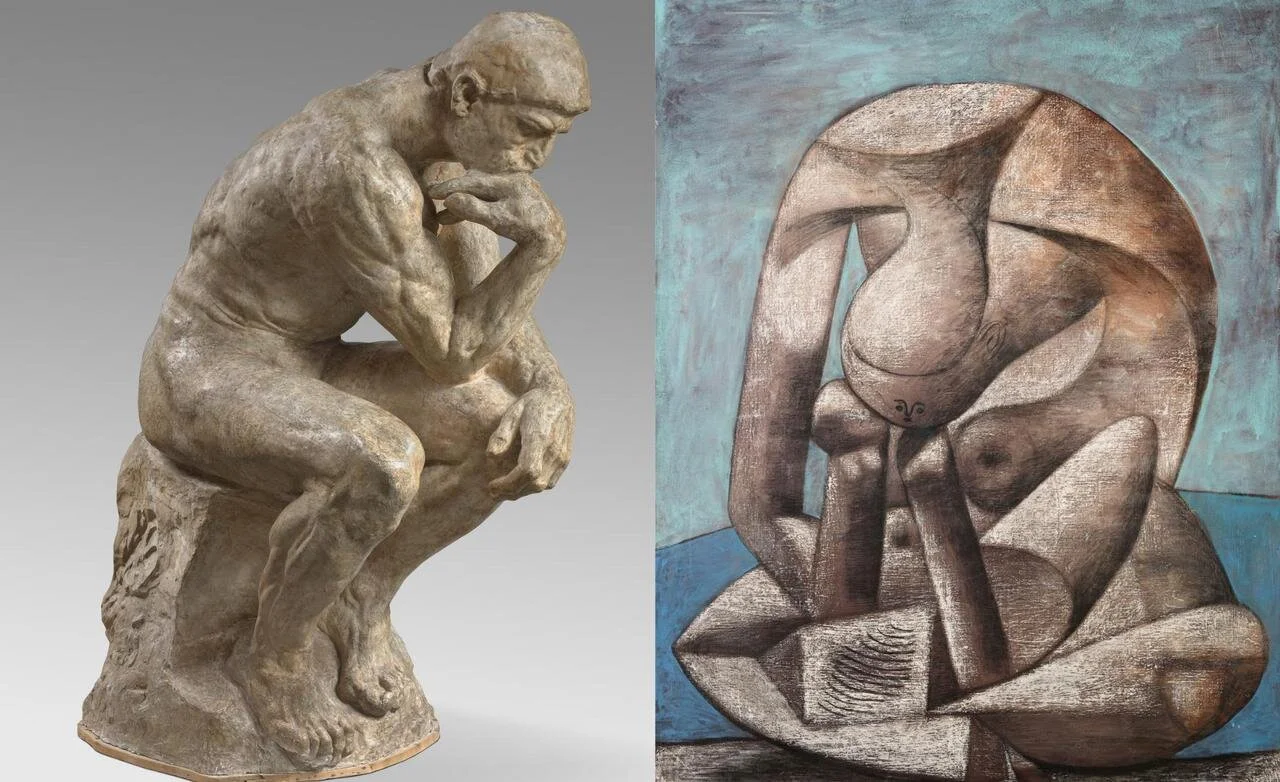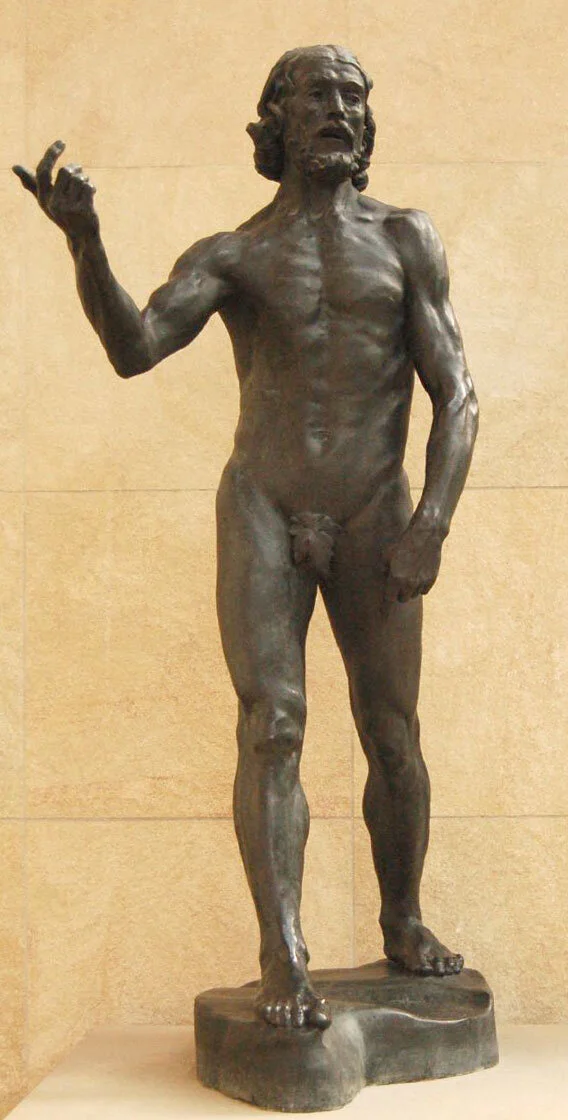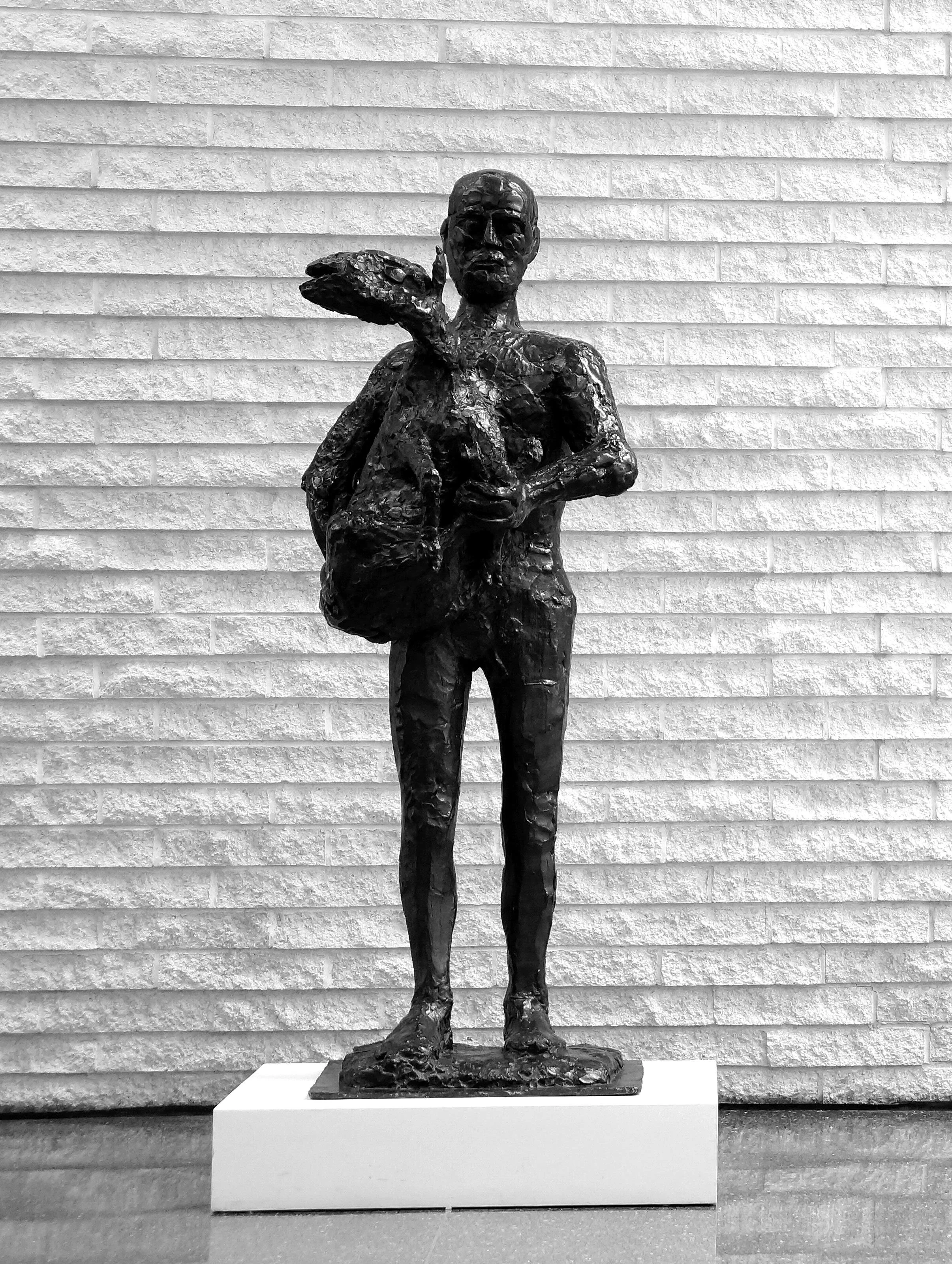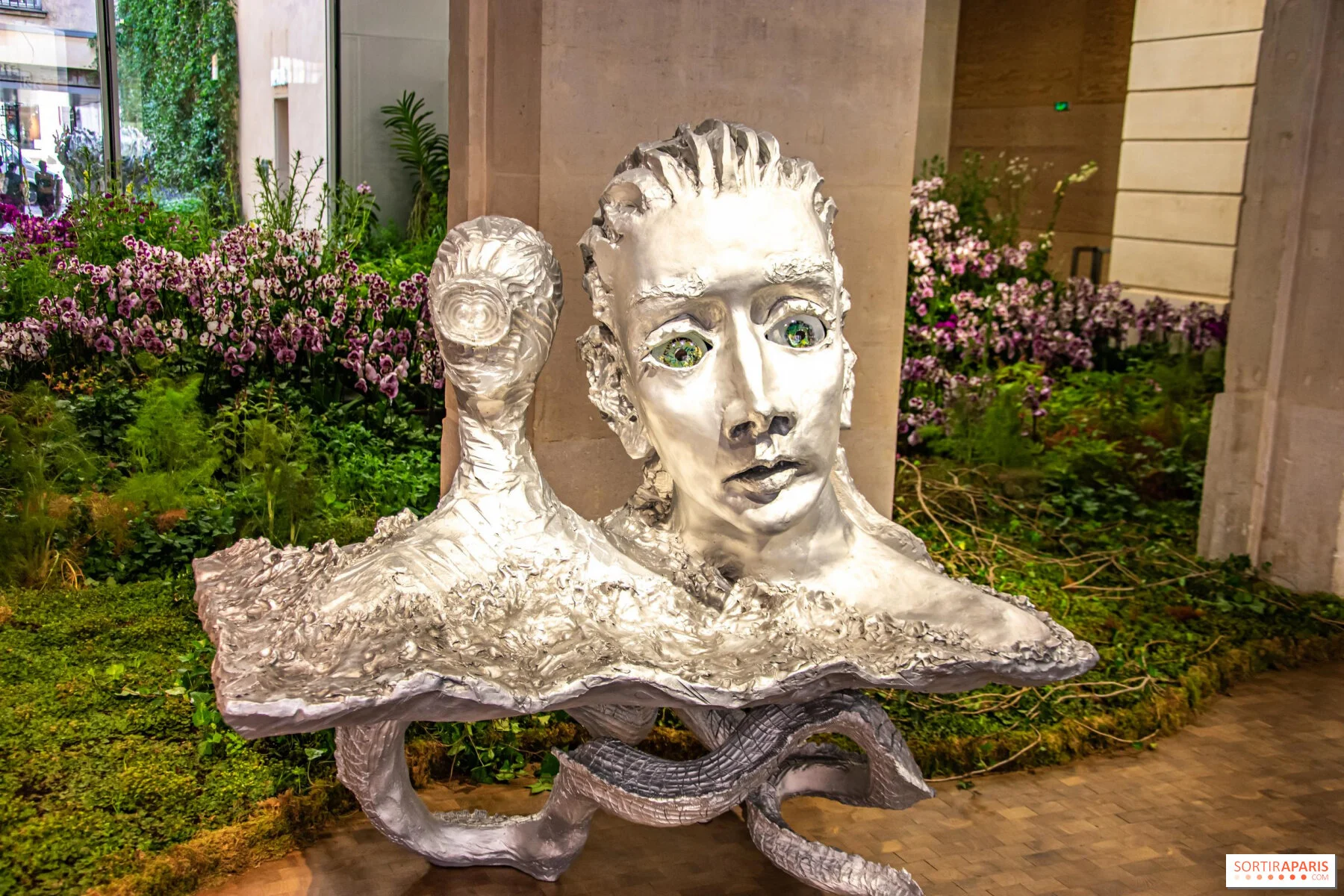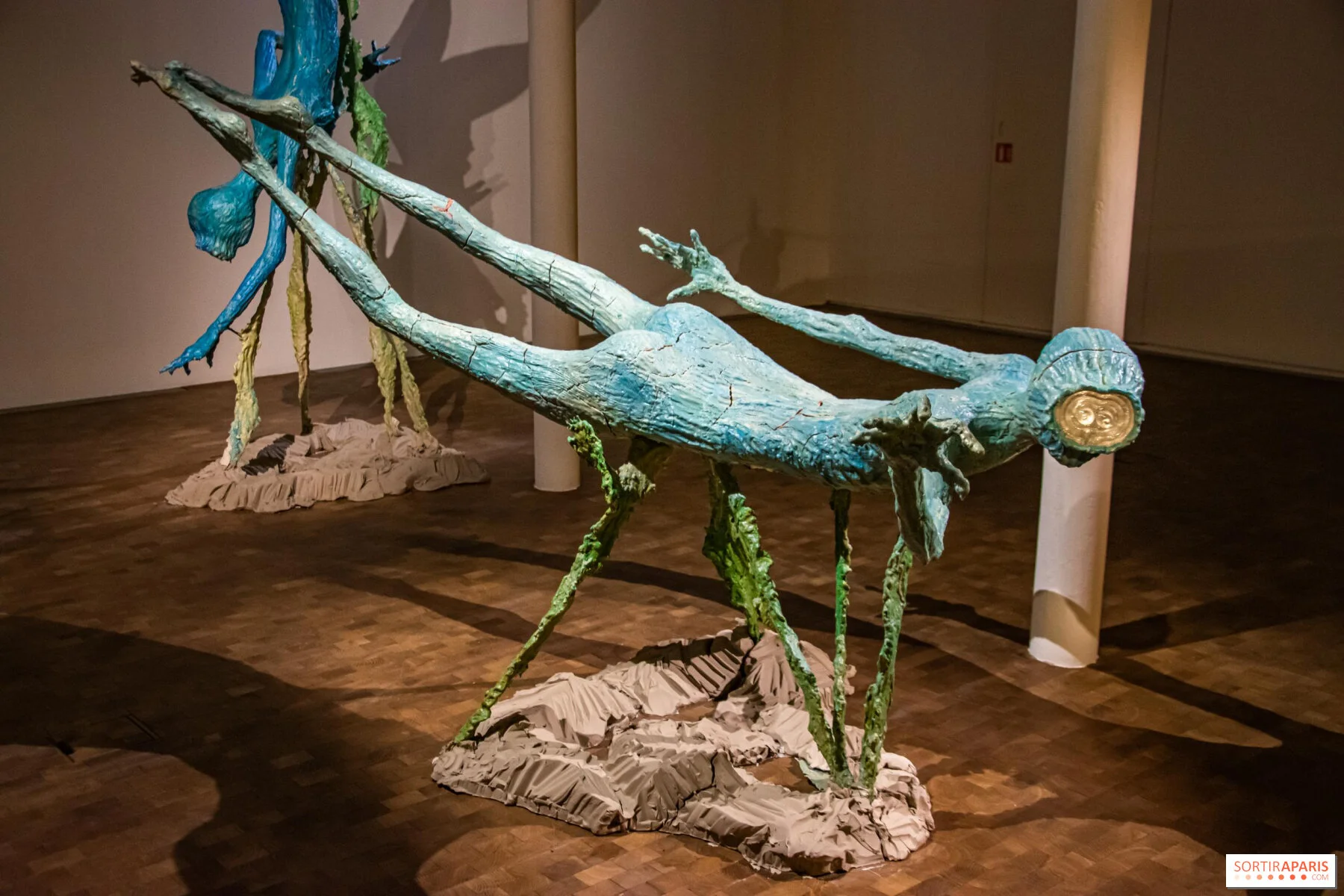‘What’s Hot, What’s Not’
Expositions in Paris, Summer 2021, Part 3
Here we go again! I’ve been to another round of exhibitions since I last wrote. And I want to share what I discovered during my busy week in Paris. I don’t want you to think that all I do is visit museums and galleries, although you wouldn’t be too far off if you thought that. But I intersperse my museum/gallery going with cafes, bistros, chocolate shops and ice cream stops, and I will tell you about a few of my favorites and finds soon.
One place I visited this week was not an exhibition per se, but a work of art in and of itself, the newly reopened La Samaritaine. More below. Also on my list for last week was the Maison Victor Hugo on the Place des Vosges which has finally opened after two years with an exhibition on Hugo’s drawings. Did you even know that he drew? At the Institut du Monde Arabe (World Arab Institute - have you ever been?) I checked out an exhibition called ‘Divas from Oum Kalthoum to Dalida’. The Picasso museum has one half of a two part exhibition on Rodin and Picasso. I’ll see the other half at the Musée Rodin sometime soon. And finally, I went to Lafayette Anticipations to see a fascinating collaborative exhibition called ‘Surface Horizons’. The gallery is across the street from Eataly, the emporium of all things Italian, so there is no way to lose on this one.
Figure 1. La Samaritaine, facade
Let’s start with La Samaritaine. (Fig 1) A few months ago, I wrote an article about the Musée Cognacq-Jay, which is the18th century French art collection amassed by the founders of La Samaritaine, Ernest Cognacq and Marie-Louise Jay. Marie-Louise, the daughter of a mason and one of 8 children, arrived in Paris at age 16, sent to live with an aunt and find work. Which she did, as a sales clerk, one of the very few respectable jobs available to a young woman. She was a natural and became the first female salesperson in the clothing department at Le Bon Marché. Ernest’s life was more rough and tumble. When he was 12, his father went bankrupt. Ernest left school and became a traveling salesman. He tried his luck in Paris twice, the first time ended in bankruptcy, the second time in La Samaritaine, which itself began as an outdoor counter where Ernest sold fabrics. The counter was made of crates, sheltered by a red umbrella, situated under an arch of the Pont Neuf, the former location of the Samaritaine hydraulic pump. Thus the name.
In 1869, aged 30, Ernest Cognacq opened a shop in a space he rented by the day. He hired Marie-Louise Jaÿ as his sales assistant. They married, combined their fortunes, (his 5,000 francs, her 20,000 francs) and bought the shop (48 square meters, about 500 square feet) Success led to further purchases of contiguous and adjacent buildings. By 1885, Ernest and Marie-Louise needed some architectural help, so they called upon the architect Frantz Jourdain. It was the height of the Art Nouveau movement and Jourdain was a committed proponent. Jourdain’s design combines brightly colored Art Nouveau decoration with a steel and glass skeleton The facade is gorgeous - decorated with ceramic panels in bright yellows, whites, greens, and golds. The word “Samaritaine,” written in white, is set against a background of golden yellow with blue and white floral patterns. The interior features decorative iron staircases, glass tile floors (Fig. 2) and frescoes of those floral motifs. (Fig. 3)
Figure 2. La Samaritaine, interior
Figure 3. La Samaritaine, peacock and floral decoration
After the original owners died, La Samaritaine continued but without the same commitment and passion. From the 1970s on, the store operated at a loss and in 2001 it was purchased by the luxury goods group, LVMH which had purchased Le Bon Marché a few years earlier. In 2005, it was closed for renovations. And for the first 8 years, LVMH battled with the founders about transforming a department store into a multi-use space and with the historic preservationists about what could be done with a building that has been listed as an historical monument since 1990. And once the renovations/restorations began, it was discovered that the glass tiled floor was not strong enough to sustain the building. Finally, the building opened to the public in June 2021, delayed one more year because of the pandemic.
Before I say anything else, I will confirm that the building, inside and out, has been painstakingly, even lovingly, restored. I don’t know if there were cost overrides because I don’t know if there was ever a budget. The building is gorgeous, jaw droopingly exquisite, a joy to behold. All of those superlatives and lots more. But I don’t want to get too carried away.
Restoring the space did not mean reviving the spirit of what Ernest and Marie-Louise created. For example, Ernest Cognacq’s motto was: “Sell cheaply in order to sell a lot and sell a lot in order to sell cheaply.” Could be Jeff Bezos’s motto too, except that the founders of La Samaritaine took care of their employees as well as their customers.
This is what I am getting at, volume requires people lots of people to show up and to buy and the founders decided that the folks who shopped at La Samaritaine were busy people looking to buy something quickly and inexpensively. So unlike Le Bon Marché, Le Samaritaine had no tearoom, there was reading room. On the floor was merchandise and salespeople.
But now, at this repurposed La Samaritaine, you are seduced at every moment by places to sit and eat, but mostly drink. Because very little of the sales floor is actually used for selling stuff. There is a lot of product placement going on. Of LVMH products. Like for example, Veuve Clicquot champagne, which you can buy by the flute, everywhere. (Fig 4) And I’m guessing by the bottle, too. You can walk up the steps or take the elevator but all along the balconies overlooking the atrium space, you can sit down and eat or drink something.
Figures 4. Veuve Clicquot Champagne at La Samaritaine
From every angle, on every floor, there is something beautiful to admire. In addition to recreating the original designs at the highest level of craftsmanship, there are fabulous modern chairs, chairs that I have admired for years, just sitting there waiting for you to …. sit on them ! Since my son is a glassblower, I noticed the fabulous glass lighting fixtures. They are by a local glass blower, Jeremy Wintrebert whose studio my son and I visited a few years ago.
I was reminded again of my Marketing professor at the Wharton School who explained that the less crowded the shop window, the more expensive the clothes. Using that measure as a guy, the clothes in this store must be very expensive because this store seems empty. (Fig. 5) I did actually have something that I wanted to buy, which gave me a chance to test customer service. Stellar!!, At least in the cosmetics department. Specifically the By Terry counter where the attractive male salesperson and I lamented the lack of available men. I suggested that he move to San Francisco. The mirrors are very flattering. I would recommend that you sit down in front of one (or more) of them, pretend you want to buy a cosmetic or two and then just bask in your own beauty. Because truly, those mirrors will make you feel like a million bucks, maybe more.
Figure 5. La Samaritaine, not much stuff !
Let’s walk over to the Place des Vosges now. Where the author of Les Miserables and The Hunchback of Notre Dame lived from 1832 to 1848. (Fig. 6) I have been visiting this museum for years. At first just to wander through an apartment overlooking the Place and to learn about Victor Hugo, too, bien sûr. Then, I started coming for the temporary exhibitions. Like the one on Babette’s Feast, the Isaak Dinesen (of Out of Africa fame) short story, and another on Spanish folk costumes. Both had links to Hugo. This time, I was eager to get to the Maison because it was closed for renovations when I moved to my new apartment, around the corner, and because its reopening was delayed for 7 months due to this pandemic, which btw seems ready to stop us all in our tracks, again, soon and of course to see the temporary exhibition on now, Artistic Visions Victor Hugo.
Figure 6. Maison de Victor Hugo, Place des Vosges & Portrait of Victor Hugo
This little house museum has been all spruced up. On the entry level, next to the modest gift shop is a courtyard. There wasn’t even an outside before and now there is a lovely courtyard with a cafe. And not just any cafe, this is Maison Mulot, which you may know from the rue de Seine. I think that if you are visiting the Place and don’t want to sit with a crowd of noisy people at La Carette or Ma Bourgogne, you would do well to consider the delicious offerings at Maison Mulot, whose website reminds us that Mulot rhymes with Hugo! (Fig. 7)
Figure 7. Maison Mulot, Terrace Cafe at Maison Victor Hugo, Place des Vosges
On the first floor is the exhibition space. Hugo apparently drew his whole life but considered his efforts, mostly pen and brown ink wash, to be dabbles, which he gifted to family and friends. He did some ‘automatic’ sketches, too. That is, he drew with his hand guiding his pen but his eyes looking at whatever he was sketching, never glancing down at the paper on which his hand moved. As the Surrealists were to do. He also sketched during seances, which was also definitely a thing. His drawings include cityscapes, landscapes and seascapes, portraits of buildings and houses. (Fig. 8)There are abstract drawings, too. And when a drop of ink appeared unexpectedly, he didn’t abandon the paper, he went with it and made something of the blotch. (Fig. 9) There is a playful drawing of an octopus (Fig. 10) and a jarring one of a hanged man. (Fig. 11) Hugo was a lifelong opponent of the death penalty and a supporter of the American abolitionist, John Brown.
Figure 8. Drawing of Tower, Victor Hugo
Figure 9. Drawing, Victor Hugo
Figure 10. Octopus, Victor Hugo
Figure 11. Hanged Man. Victor Hugo
The second floor has been spruced up, too. While it is the same rooms as I remember, they seem fresher. (Fig. 12) The rooms are recreations of those in homes in which Hugo and his family lived. In Paris as well as in Guernsey, where Hugo lived in exile from 1855 to 1870. And the recreated rooms are also from the home of Juliette Drouet, his long time (50 years) mistress. She met him when she was a young woman and abandoned her acting career to be with him. Hugo and his wife, after having 5 children, seem to have gone their separate ways. Juliet remained with Hugo even though he was a libertine and a philanderer. Even though she complained bitterly about his sexual exploits. He seems to have not only been obsessed with bedding women, but with writing about his exploits, too, in a notebook, in code. Sounds like Bob Packwood, Republican Senator and diarist. One of Hugo’s conquests may have been Sarah Bernhardt.
Figure 12. Maison Victor Hugo, Place des Vosges, Paris
Another day, another exhibition. This time, I walked along the Blvd Henri IV, across the île St. Louis once and the Seine twice before arriving at the Institut du Monde Arab, just down the street from the Tour d’Argent. I’ve been several times (to the Institut, not the restaurant, where I’ve been only once, for lunch - grand, you should go, you deserve it) and each time for a really interesting exhibition. It was there, for an exhibition on the Suez Canal, that I learned that Bartholdi, the sculptor of the Statue of Liberty, first offered a version of that statue to Egypt to welcome people to the Canal. Another exhibition was on the monuments that have been destroyed or damaged during these terrible years of fighting in Iraq and Syria, like Nineveh, Nimrud, Palmyra - all places I first learned about in my Art History text books.
The exhibition currently at the Insititut, is ‘Divas D'Oum Kalthoum à Dalida.’ (Fig. 13) The subject is the Egyptian, Lebanese and Algerian female entertainers who were prominent in the Arab world from the 1920s to the 1970s. They were singers, dancers, actresses and even film producers at a time when Egypt’s film industry was the third largest in the world. Dalida is the best known here. She was born in Egypt to Italian parents and became a star when she moved to Paris, to Montmartre. (Fig. 14) The curator of the exhibition calls these divas ‘emancipated feminists who spearheaded a cultural revolution'. With a combination of videos and ‘stuff,’ mostly the dresses the divas wore during their performances, the exhibition tells their stories. There was music and singing in every room and in some, snippets of films in which these divas starred. According to the curator of the exhibition, the divas were “charismatic characters, (and) incredible stage performers, capable of leading the crowd in musical ecstasy, known in Arabic as tarab”. Oum Kulthum gets the most coverage due to the role she played during Egypt’s fight independence. Nassar was a big fan, that helped. (Fig, 15)
Figure 13. Poster for Divas D’Oum Kalthoum a Dalida’ Institut du Monde Arab
Figure 14. Dalida in Cairo, Egypt
Figure 15. Oum (Uum) Kulthum performing
The exhibition shows us a time when women were unveiled and in charge. Even when men tried to control them, as they sometimes did, they often found the courage to fight back and reclaim their autonomy. Our sense is that now, women’s lives in the Arab world are much more circumscribed and restricted. But the curator sees it differently. According to her, "Contemporary artists have been inspired by the way in which these women emancipated themselves from patriarchal society, … in order to live their dreams and succeed in their careers.’ Can contemporary female artists really do the same? Biased media, I guess.
The next exhibition I saw was ‘Picasso-Rodin, une exposition, deux lieux’ (one exhibition, two locations).The Picasso museum is in my neighborhood so I went there first. The museum is housed in a great hotel particulier, the Hotel Salé, so called because the man for whom it was built, Pierre Aubert de Fontenay became enormously wealthy as the king’s Salt Tax collector. Salé in French means salty, of course. It is a beautiful museum, and I will tell you about it sometime, both the bas reliefs which are original to the building and the furniture and lighting fixtures that Alberto Giacometti’s brother, Diego designed which although thoroughly modern, blend beautifully with the 17th century interiors.
The blockbuster exhibition of the year, Picasso-Rodin, is an exhibition about two giants, both as artists and as egos. To confirm that Picasso was influenced by the work of his elder colleague, even if he may never have met him, we see Picasso visiting the Rodin retrospective that was held in 1900 at the Pavillon de l’Alma. And nearby is a photo of Picasso in his studio, a print of Rodin’s Thinker tacked to the wall..
At the Musée Picasso, the focus is on the private sphere of artistic creation. We see both artists in their respective studios working out ideas that eventually become the works of art for which each is so well known. There are some interesting juxtapositions, comparisons of the two artists’ works, some poignant, others, whimsical, as Picasso ‘riffs’ off his predecessor’s works, in open competition or playful acknowledgement. Like Picasso’s Kiss and Rodin’s Kiss (Fig. 16) Rodin’s Dancing Woman, a leaping figure, legs akimbo, feet omitted and Picasso’s La Nageuse, as free as the air but swimming in water. (Fig 17) Rodin’s Thinker is juxtaposed with Picasso’s Grande Baigneuse au Livre, a woman leaning on her chin, reading a book between her legs. (Fig 18) The figure of St. John by Rodin and Picasso’s Shepherd are placed next to each other. Both stride ahead toward something only they can see. (Figs 19, 20).
Figure 16. Picasso / Rodin Exhibition Poster, The Kiss
Figure 17. Rodin, left, Dancer, Picasso, Right, Swimmer
Figure 18. Rodin, left, Thinker, Picasso, Right, Reader
Figure 19. St. John, Rodin
Figure 20. Picasso, The Good Shepherd
The final exhibition I want to share with you today was one I saw at Lafayette Anticipations, called Surface Horizon.(Figure 21) I like this gallery a lot. I like that it give artists the place and the possibility of creating something new, something site specific. And the gallery was designed to accommodate all kinds of exhibitions. There are studios and workshops where the artists can create with experts to help them realize their projects. Of the two artists whose collaborative work is now at the gallery, one is a horticulturalist, the other, a sculptor. The multi-piece work they created exists on all three levels of the gallery plus the terrace and the roof. It is ephemeral, some of the plants may find a home elsewhere but I’m guessing that the fragile wax coated clay sculptures will probably not make it past the exhibition. According to the press release, “Drawing on the history of our relationship with the earth, the exhibition explores the contamination, depletion and burning of the earth caused by (humans).” The artists wish to show that it can be otherwise, that the earth (can be) a place of exchange and interdependence.” (Fig. 22) There is ample and interesting wall text in French and English. If you try to understand what the artists are offering, your effort will be rewarded.
Figure 21. Surface Horizon Exhibition, Lafayette Anticipations, Paris
Figure 22. Surface Horizon Exhibition, Lafayette Anticipations, Paris
Paris, even with all the constraints imposed by this awful virus, is a place like no other. If you can get here, you should come. Seriously. Now.
Copyright © 2021 Beverly Held, Ph.D. All rights reserved
Dear Reader, I hope you enjoyed reading this article. Please click here or sign up below to receive more articles plus other original content from me, Dr. B. Merci!
And, if you enjoyed reading this review, please consider writing a comment. Thank you.

